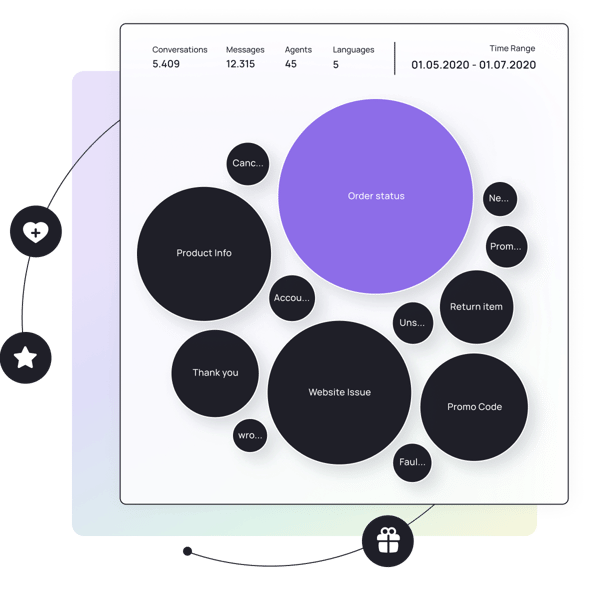Why so many AI customer service projects fail
We speak with many Heads of Customer Service who are all looking to AI to help them deal with growing inquiry volumes and ever-higher standards of customer experience.
There’s a problem though. Many automation platforms don’t perform well in customer service. The reason for this is straightforward: the AI has to learn all the possible ways a question can be asked.
And with traditional rule-based automation, a human needs to teach the AI model all those ways. However, customer service leads don't necessarily know exactly what kind of inquiries their team receives. They’ll have the high-level picture, of course — bills, invoices, parcel tracking etc. — but they won’t have the granular level of data necessary to provide answers.
Traditional AI implementation teams therefore have to guess what questions will be asked, and to differentiate between the many ways the questions are formulated, which can be extremely labor-intensive.
Historical data becomes a treasure trove
This guesswork is the problem. A human can understand hundreds of different ways of phrasing a question. But in order to deliver an exceptional customer experience, an AI system requires thousands of expressions to reply accurately.
There is a way to avoid this manual data simulation exercise. Enter Ultimate's CS Automation Explorer.
Every customer interaction is already logged and transcribed within your CRM. We just need to unlock that historical data, structure it, and use it to train AI to replicate the work of a customer service agent. To do this, we use clustering.
More on the power of AI
Clustering is a technique used to automatically classify thousands of lines of unstructured conversations. In seconds, it can bring an enterprise’s customer service data to life, revealing common cases, best responses, frequency, urgency and processes.
We run your historical customer service data through our CS Automation Explorer. This tool, using proprietary deep learning algorithms, automatically clusters the data to determine what customers are asking most frequently and to evaluate how much of your customer support could be automated.
Certain recurring cases (e.g. order status inquiries) can be entirely automated. The AI continuously learns from the data and the more it learns, the better it performs.
With the information garnered from clustering, the Ultimate virtual agent platform can go live in about 3 weeks. The algorithms automatically create training data for the AI, meaning no manual work is needed. Not only is the deployment far faster with a clustered approach — the AI is also smarter. It understands customer needs at the granular level and improves the overall customer experience. What's more, language presents no barrier.
Clustering completely removes the burden from the client. The technology tells us what customers are asking, and offers accurate answers. The AI will constantly source expressions, and it will always outperform a human simulation.
"Working with our virtual agent has helped us identify our most common issues and really helped us understand how our customers talk to us."
- Suzanne Duffy, Head of Customer Service, Papier
Read how a virtual agent paved the way for Papier’s US expansion.
The future of customer service
Ultimate dedicates a lot of resources to clustering. It allows us to scale across languages and territories, it gives us very high suggestion accuracy, and it helps us to slash critical service metrics like Average Handle Time and First Response Time.
Seeing the impact that deep learning, clustered AI can have on customer service is astounding. We believe that this is the future: technology that can deal with the volume, and that not only maintains customer experience, but actively improves it.
It’s taken us a long time to build, and much like our AI, we’ll never stop learning and improving.

